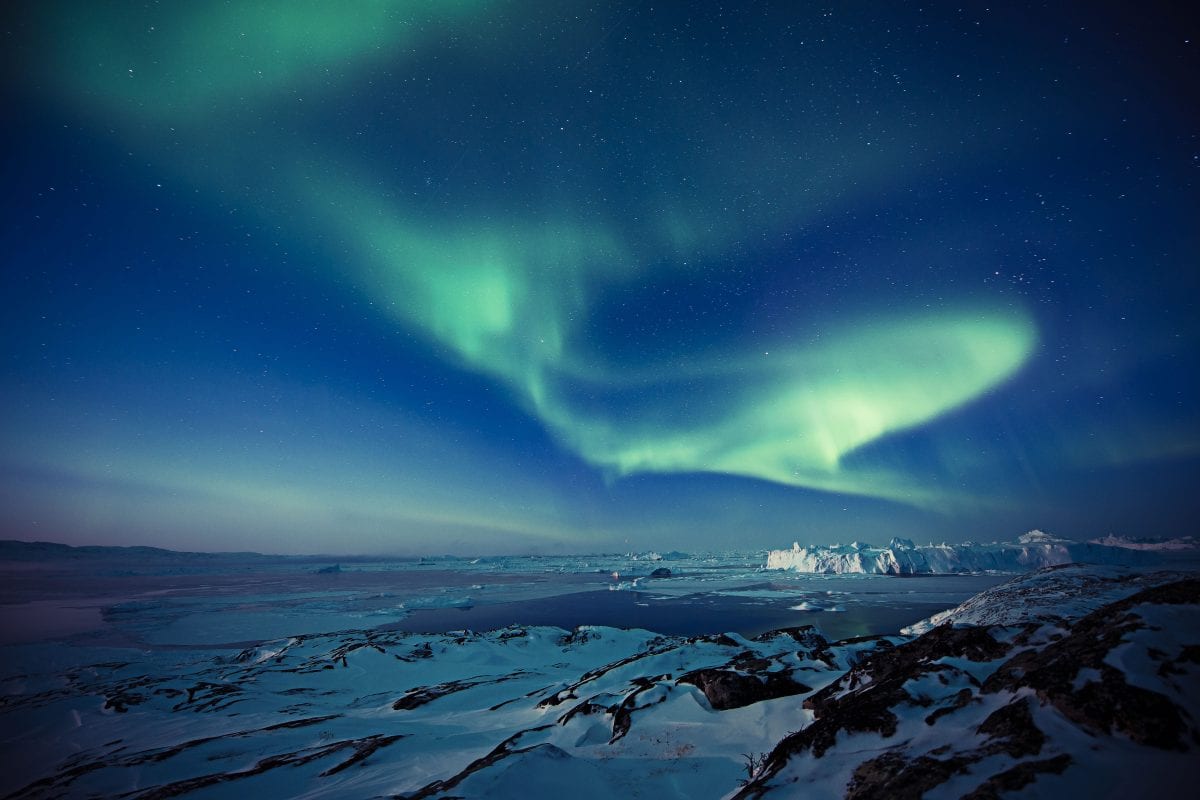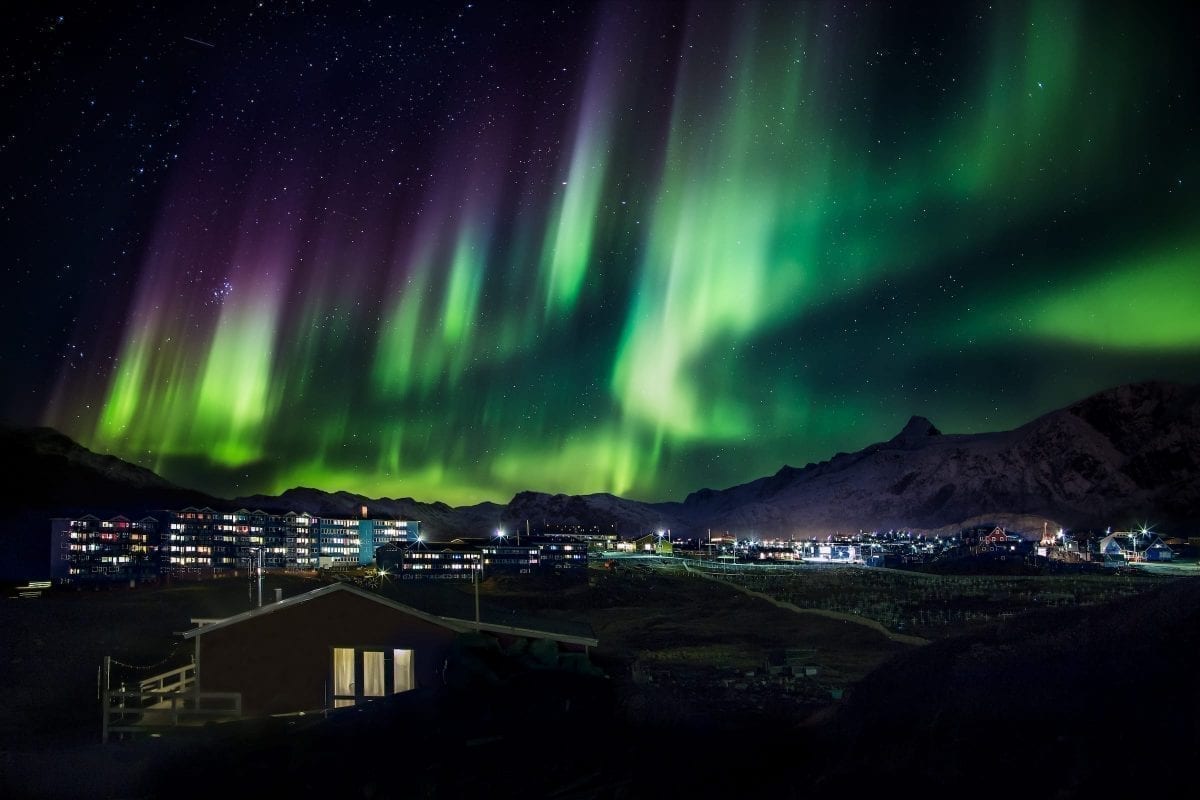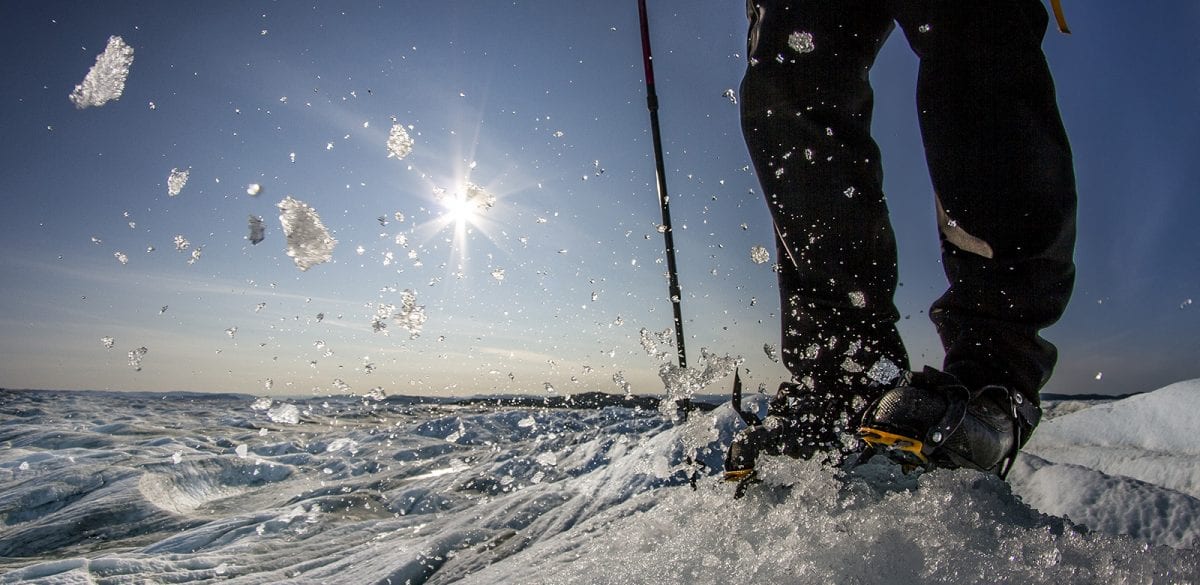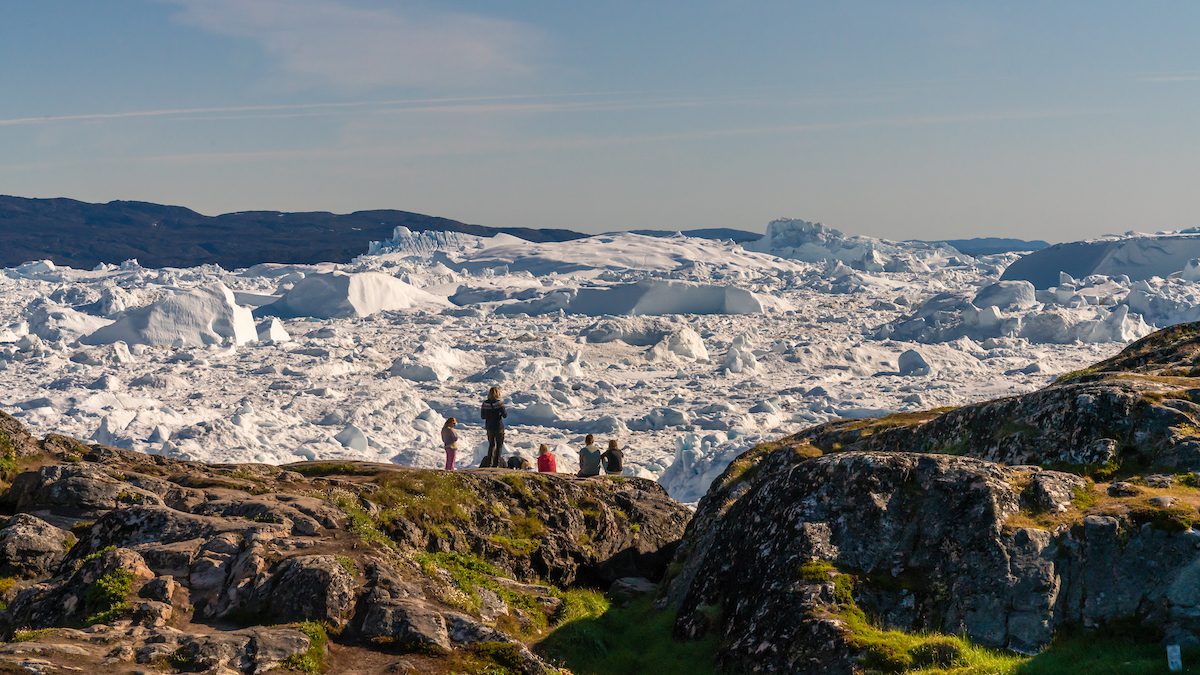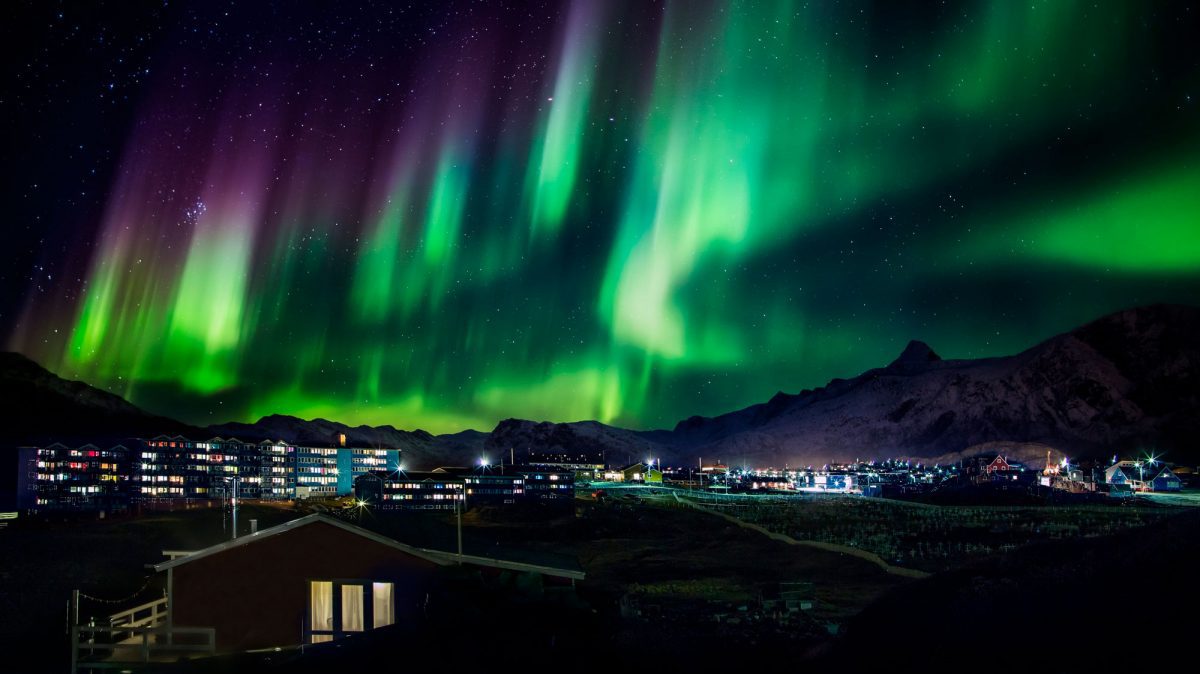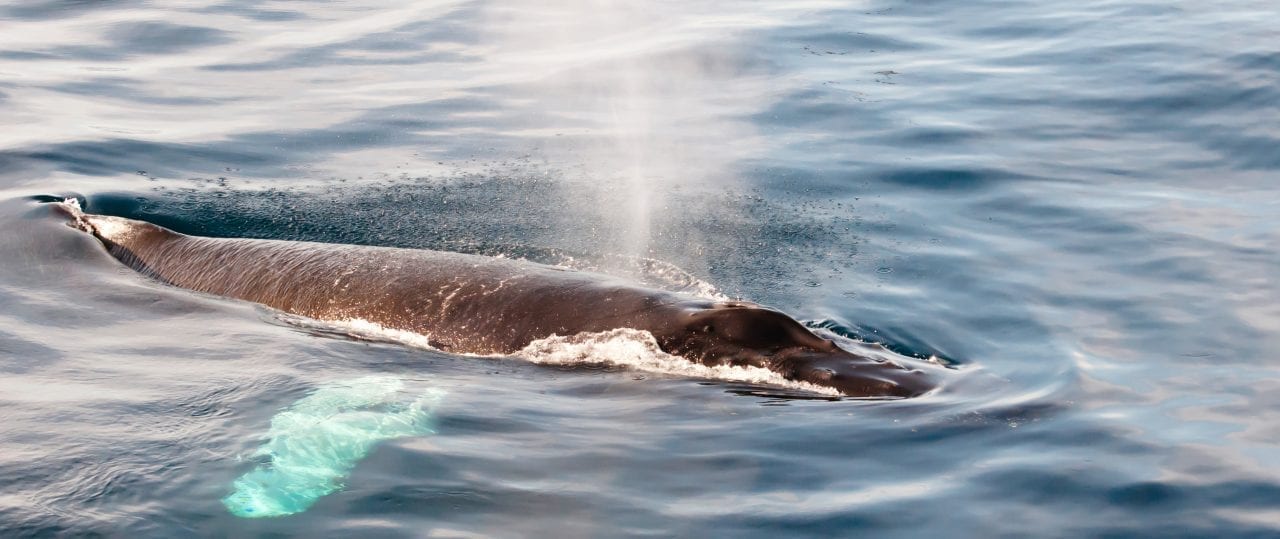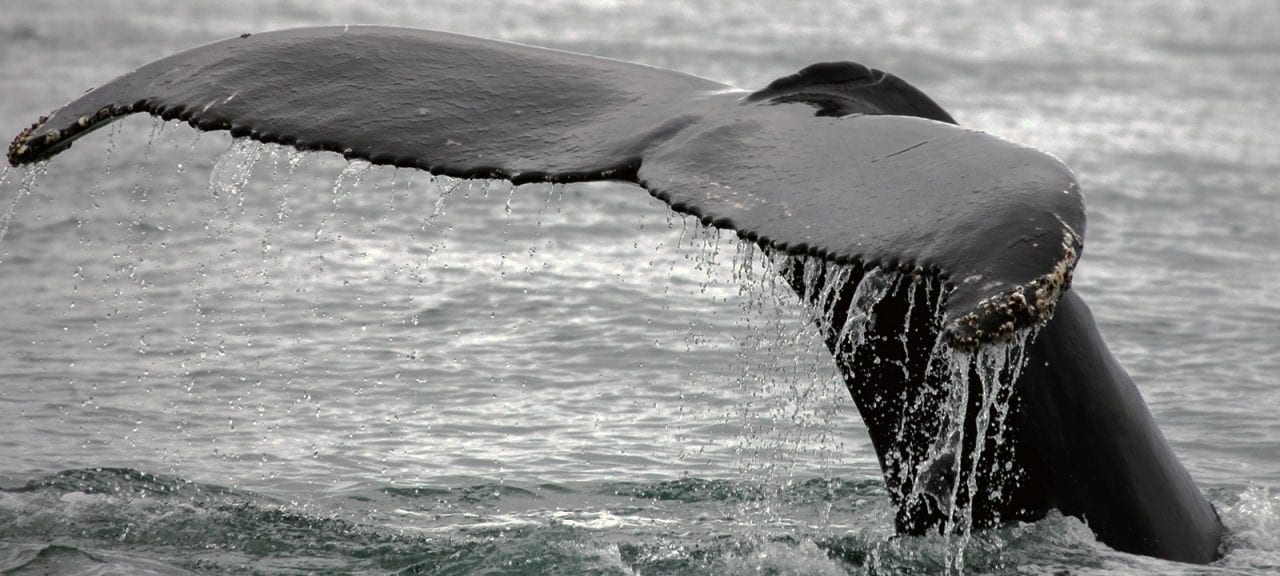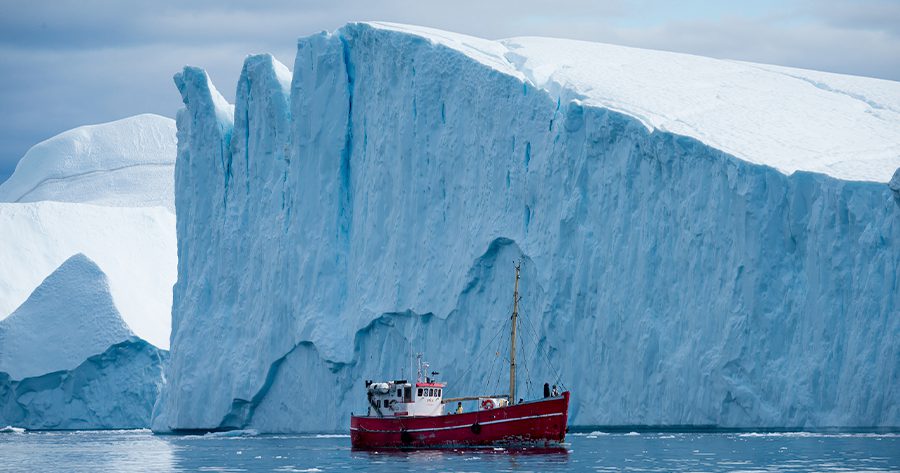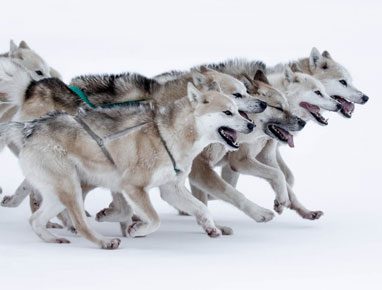Ice and snow
It all starts with the Ice Sheet. You cannot fail to be fascinated by the sheer scale and the power and beauty of the Ice Sheet. The icebergs are calved from the glaciers before heading off on their long ocean voyages. They are unique, magnificent works of nature.
Ice is everywhere in Greenland
If the Greenlandic Ice Sheet were to melt, all the oceans of the world would rise between 6 and 7 metres. It contains almost half of all the fresh water in the northern hemisphere. The Ice Sheet stretches some 2,400 km from north to south. It is around 1,100 km wide, covering an area around 40 times larger than Denmark. The highest point is approximately 3,238 metres above sea level. In the thickest area it is about 3,500 metres thick, as the ice has pushed the underlying landscape far below sea level. The bottom of the Ice Sheet could be up to two million years old.
Experience the Ice Sheet in several places in Greenland
There are several places in Greenland where you can experience the Ice Sheet up close. In Southern Greenland, the Ice Sheet winds its way through the landscape, and the actual edge of the ice can be reached on a day’s hike. It is also possible to sail into one of the many ice tongues that run down into the fjords and fill them with ice.
In Kangerlussuaq, the Ice Sheet is a mere 30 km from the settlement. You can reach it on one of the organised trips by bus/jeep in around two hours. This is a very popular tour, you can try all year round. In the summer, you can get right up to the edge and walk on the actual ice. It is also possible to hike to the edge. Or if you are up for it, you can bike there along a bumpy dirt road.
If you travel to the east coast, you will find deep fjords where the inland ice calves, filling the fjords with giant icebergs. According to one of our most well-travelled consultants, East Greenland is the most beautiful place he has ever been.
Icebergs and calving glaciers
When pieces of Ice Sheet breaks off and become floating icebergs, one of the best places to see them is the UNESCO protected ice fjord at Ilulissat. It is not without reason that one of the main attractions in Greenland is the Icefjord. Here icebergs break directly off the Ice Sheet before being pushed out into Disko Bay. This results in rich fishing grounds arising, feeding the local towns and villages. The Icefjord gives visitors a unique access to a truly phenomenal area of natural beauty.
In the case of the Icefjord, there is one place that is totally unique, the Eqi Glacier. There are few places in Greenland as beautiful as the Eqi glacier, which flows into the fjord, 70 km north of Ilulissat. By boat, you can get right up close to the edge of the glacier and watch it calve massive pieces of ice. The noise is immense and the sight of icebergs falling into the water is breathtaking.
However, the best experience of the calving glacier is to be had from staying the night at Glacier Lodge Eqi – a unique and intense experience where you stay at the little cabin village directly overlooking the glacier. From here, you also have the option of hiking to the edge of the glacier, which is, of course, part of the Ice Sheet.
Capital of the icebergs
The Icefjord is located at Ilulissat, which is Greenlandic for icebergs. The town is scenically situated at the mouth of the 60-km long fjord. Here more than 40 million tonnes of ice flow from the Ilulissat glacier into the Icefjord every day. The icebergs break off at the edge of the Ice Sheet and are sent out through the long fjord where they become stranded on a sand moraine close to town. This makes the Icefjord quite unique – not only is it incredibly beautiful, but it is also easily accessible on foot, by boat or by helicopter.
The massive icebergs extend more than 100 metres above sea level. Occasionally, there is so much pressure on the stranded icebergs that some of them break free and are carried by the current up through Disko Bay. The Icefjord and the glacier are the most productive glacier – not just in Greenland, but in the northern hemisphere. The glacier is 7 km wide and more than a kilometre thick. The endless amounts of ice can be observed from quite close quarters.
Regardless of how you experience the ubiquitous ice, it makes you feel very small, surrounded by impressive and all-encompassing nature.
